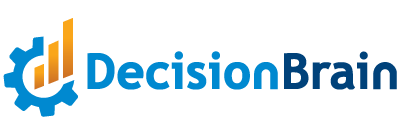Overview
Enhancing Port Operations with Advanced Scheduling Solutions
A leading IT services provider partnered with DecisionBrain to enhance the operational efficiency of a major port operator in Southeast Asia. This port operator manages critical maritime logistics, including the scheduling of tugboats and pilots for the safe and timely docking and departure of large cargo vessels. Previously reliant on manual processes using Excel, the port operator faced inefficiencies in minimizing vessel delays, optimizing tugboat utilization, and ensuring fairness in pilot assignments. The IT services provider engaged DecisionBrain to develop an advanced optimization model integrated into their existing management solution to address these challenges. Since implementing DecisionBrain’s optimization solution, the port operator has achieved a 10% reduction in vessel delays, improved tugboat utilization, enhanced pilot assignment fairness, rapidly adjusted plans to unforeseen events, and created significant time savings in the planning process.
Solution
Implementing a Customized Tugboat and Pilot Optimization System
DecisionBrain created a robust optimization solution tailored to the port operator’s specific needs. The solution focused on three key areas:
1. Tugboat Scheduling Optimization:
- DecisionBrain developed a constraint programming model using CP Optimizer, designed to optimize the assignment of tugboats to vessels based on compatibility, minimizing fuel consumption, and reducing delays. The model considered the varying sizes and capabilities of both the tugboats and vessels, ensuring that the right tugboat was assigned to the right job.
- The model also took into account peak times, resource availability, and unexpected breakdowns, allowing the port operator to quickly re-optimize schedules in real-time when necessary.
2. Pilot Scheduling Optimization:
- The solution included a module for optimizing pilot assignments, ensuring fairness by balancing the workload across all available pilots. The model considered pilot classifications and their compatibility with vessel sizes, aiming to minimize discrepancies in job assignments among pilots, which was crucial for maintaining operational efficiency and fairness.
3. Operational Insights and Monitoring:
- The solution provided comprehensive dashboards that allowed planners to monitor tugboat utilization, pilot assignments, and berth occupancy in real-time. These dashboards enabled the port operator to make informed decisions quickly, further reducing delays and optimizing resource usage.
Results
Significant Operational Improvements and Time Savings
Since the implementation of DecisionBrain’s optimization solution, the port operator has achieved significant improvements in its operations:
- Reduction in Vessel Delays: The port operator reported a minimum 10% reduction in daily vessel delays, leading to improved vessel turnaround times and increased port throughput.
- Improved Tugboat Utilization: The optimization model ensured that tugboats were used more efficiently, reducing unnecessary fuel consumption and operational costs.
- Enhanced Pilot Assignment Fairness: The fairness in pilot assignments was greatly improved, with a balanced distribution of jobs across all pilots.
- Rapid Plan Recalculation: The optimization model swiftly adapts to unexpected events by recalculating and updating plans in real-time, ensuring continuous operational efficiency.
- Time Savings: The planning process, which previously took hours, can now be completed in minutes, freeing up valuable time for the port operator’s operational staff to focus on other critical tasks.
This case study not only highlights the transformative impact of DecisionBrain’s solution on the port operator’s operations but also serves as a prime example of how advanced optimization models can significantly enhance the efficiency of maritime logistics.
Glossary
Glossary: Key Terms in Tugboat and Pilot Scheduling Optimization
- Berth: The designated location in a port where a vessel is moored.
- Constraint Programming: A method of solving complex problems by defining a set of constraints that solutions must satisfy, allowing for efficient exploration of possible solutions and identification of optimal outcomes.
- CP Optimizer: A high-performance optimization engine used for solving scheduling, resource allocation, and other combinatorial problems.
- Optimization Model: A mathematical framework designed to find the most efficient and effective solution to a problem by maximizing desired factors (e.g., efficiency, fairness) and minimizing undesired factors (e.g., cost, delays).
- Tugboat: A small, powerful boat used to guide larger vessels into and out of port by towing or pushing them.
- Tugboat Pilot: A skilled mariner who navigates and operates a tugboat to assist larger vessels in docking, undocking, and maneuvering in confined or challenging waterways, working closely with the port pilot to ensure safe and efficient vessel movements.











